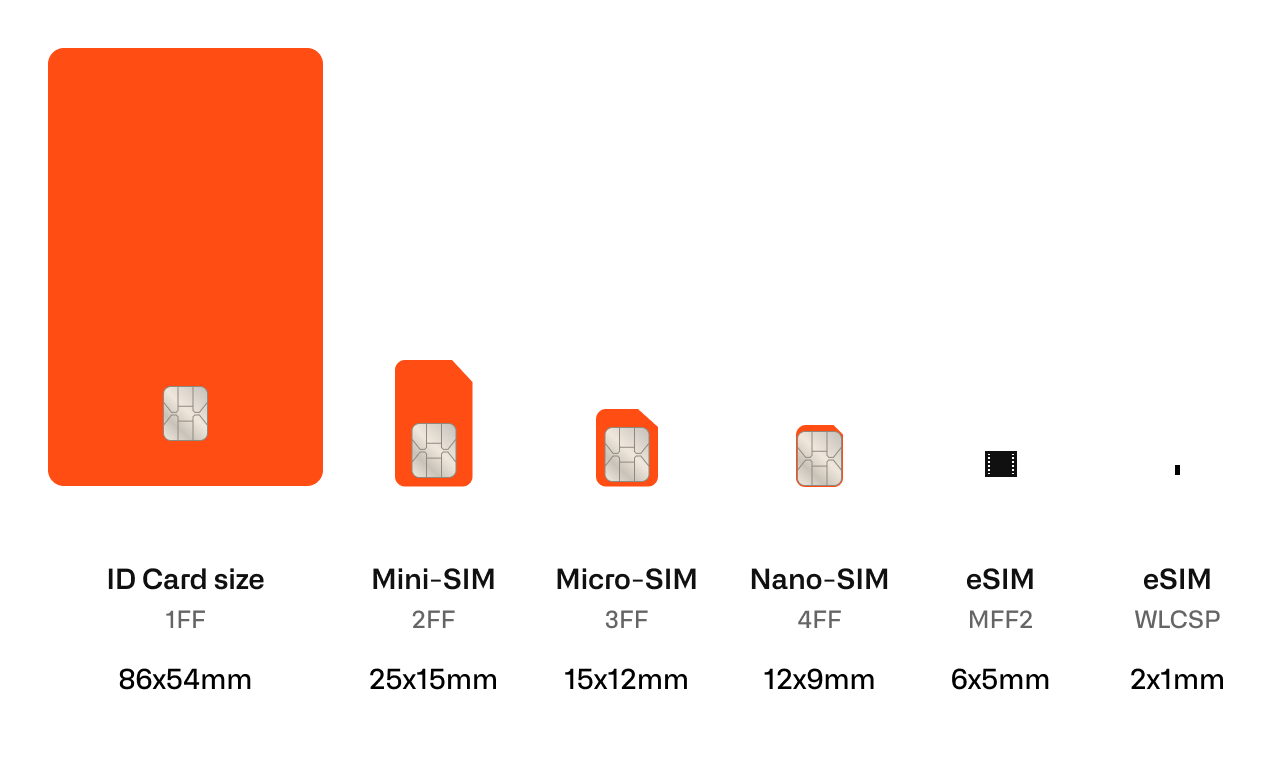SIM Cards Types
Discover the intricacies of SIM cards, their classifications, applications, quality measures, and formats.
Standard vs. Industrial SIM
While standard SIM cards are ideal for stationary objects in typical environmental conditions such as temperature or humidity, industrial SIM cards are tailored for mobile objects, smart metering applications, and other similar functionalities under more challenging circumstances.
Even though a standard SIM might last over a decade, its anticipated lifespan is between 2 to 5 years. Conversely, industrial SIM cards are estimated to last between 5 to 10 years, especially when there's regular SIM activity. (However, with LPWA, such frequent activity is unexpected.)
For more detailed information about our SIM cards, see the comparative table below:
| Feature | Standard SIM | Industrial SIM |
|---|---|---|
| Target Segment | Connected consumer electronics | Industrial and Mobile Applications such as security, smart metering, transport, etc. |
| Operation Conditions | Primarily indoor | Varied from stationary machines to mobile goods & vehicle telematics equipment |
| Usage Profile | Moderate (e.g., 1-2 SIM events/hour) | High (e.g., 1 event/minute) |
| Expected Lifetime | 2-5 years | 5-10 years |
| ETSI 102 671 EPI Specifications | Various technical specifications | Advanced technical specifications including temperature range, humidity support, etc. |
eSIM
An eSIM, or embedded SIM (also electronic SIM), is in line with GSMA remote provisioning standards. These remote SIM provisioning specifications enable enterprises to activate and alter the SIM profile embedded in IoT devices remotely or Over-The-Air (OTA). Currently, there are two kinds of remote provisioning specs: M2M and Consumer.
Consumer Market
Smartwatches and eSIMs harmonize well due to the small form-factor of smartwatches, which need compact components. However, eSIMs, being embedded, can't be taken out, emphasizing the necessity for remote provisioning. Adoption rates for eSIM technologies in smartwatches have been surging, especially with major brands integrating them.
Challenges for eSIM Adoption: Regulatory barriers, certain unstable business models, and the IoT market's diversity and fragmentation. Nevertheless, eSIM usage is on the rise.
M2M IoT Market
IoT devices, unlike smartwatches or smartphones, usually lack a user interface, imposing different challenges and necessitating a distinct architecture. The GSMA’s ‘Remote Provisioning Architecture for Embedded UICC (eUICC)’ offers a solution, facilitating automated IoT connectivity.
3 Key Elements for Remote Provisioning:
- eUICC: A secure element housing one or multiple subscription profiles, making it functionally similar to a removable SIM.
- SM-DP (Subscription Manager – Data Preparation): Manages the preparation, storage, and protection of operator profiles.
- SM-SR (Subscription Manager – Secure Routing): Handles the management of profiles on eUICC. An effective connectivity management platform equipped with eUICC technology fosters global IoT deployments, streamlining manufacturing, logistics, and deployment processes, and ensuring a cost-effective, secure, and scalable global reach for IoT.
nuSIM
With nuSIM, the SIM function is integrated into the modem chip, eliminating the need for a physical SIM and its associated logistics and handling challenges. This makes the entire process more streamlined and efficient.
SIM Card Formats
